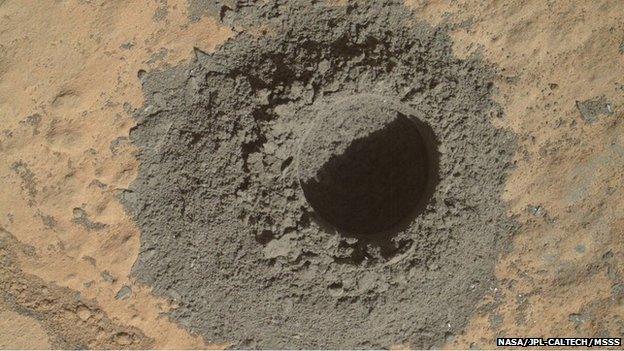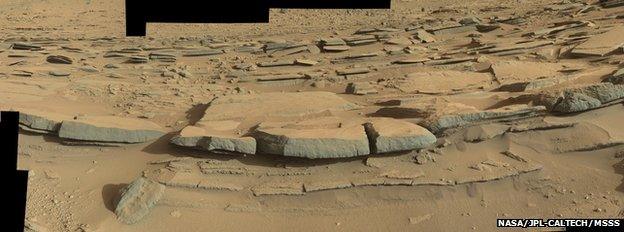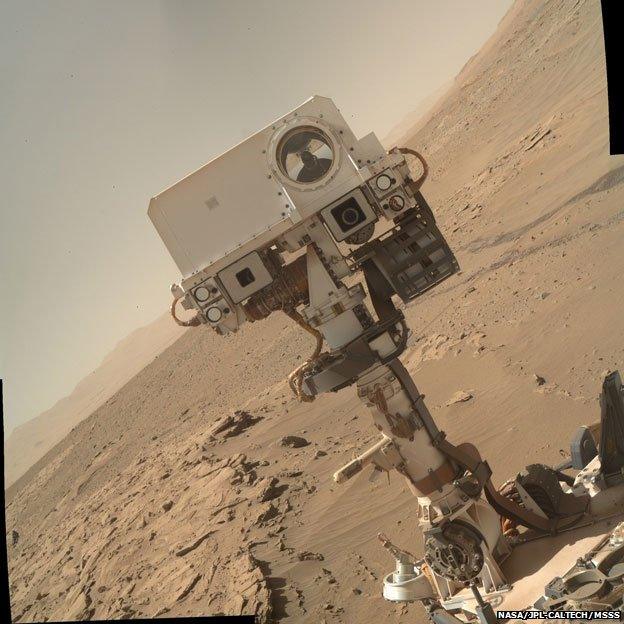Nasa's Curiosity Mars rover starts drilling again
- Published

It is almost a year since Curiosity last turned its drill on Mars
The US space agency's Curiosity Mars rover has drilled another hole on the Red Planet.
It is almost a year since the robot last turned the power tool in the ground.
The vehicle has since travelled more than 5km (three miles) as it heads towards the mission's primary target - the foothills of the huge mountain that dominates Mars’ Gale crater.
The rock drill was spun at a scientific waypoint known as "The Kimberley".
New pictures sent back to Earth on Wednesday, taken by the rover’s Mahli “hand lens”, show a sharply defined hole surrounded by a pile of grey powder.
Before turning the tool, the robot had been commanded to examine several rock targets with all its survey instruments.
Scientists and engineers must now assess the qualities of the powder produced. If past practice is followed, this will have been a test.
Assuming it has gone satisfactorily, the rover will then acquire a second drill sample for ingesting in the robot's on-board laboratories.
Curiosity last used its drill in May last year in a small depression not far from its August 2012 landing site.
The samples pulled up from mudstones at the bottom of this shallow bowl contained evidence of an ancient lake.
From the rock chemistry, scientists were able to determine the type of environment that existed in Gale Crater billions of years ago.
The researchers said the conditions would have allowed micro-organisms to flourish had they been present.

The rover has witnessed some fascinating rock forms on its travels

The same camera used to picture the hole produced this "selfie" a few days ago
Jonathan.Amos-INTERNET@bbc.co.uk and follow me on Twitter: @BBCAmos, external
- Published9 December 2013

- Published9 December 2013

- Published26 September 2013

- Published19 September 2013

- Published6 August 2013
- Published10 July 2013
